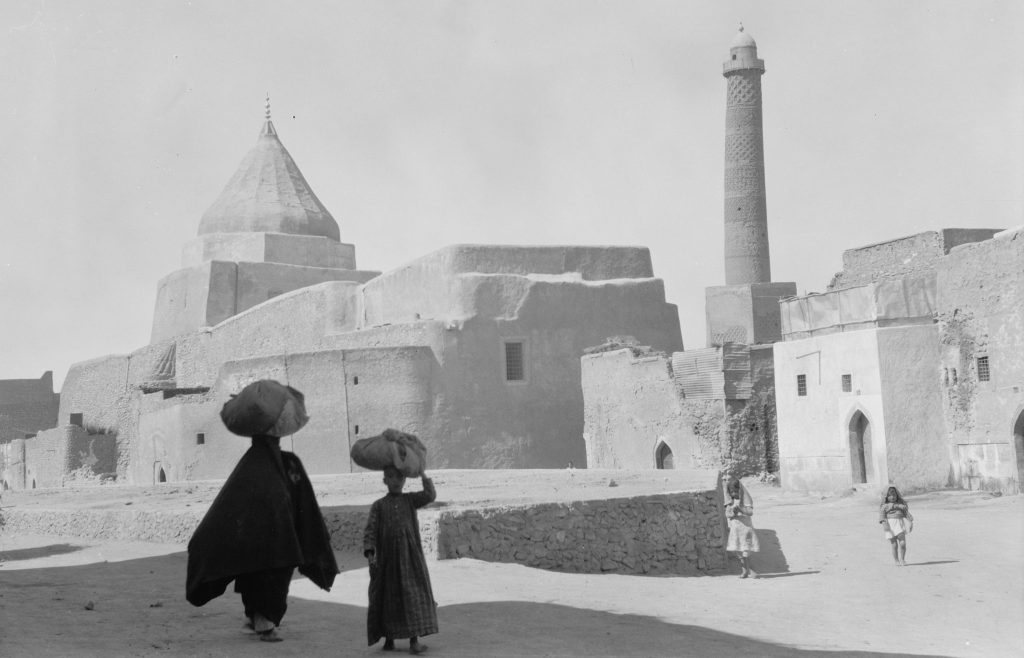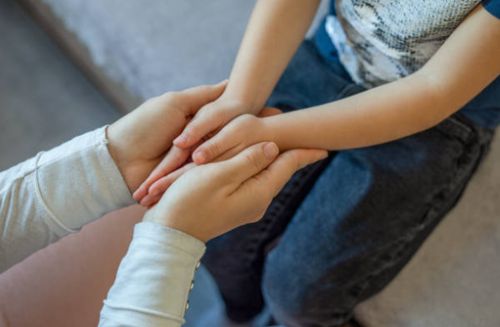
The future of Yazidism is unclear, but it will certainly never be the same again.

By Dr. Jan Ilhan Kizilhan
Baden-Württemberg Cooperative State University
Institute for Psychotherapy and Psychotraumatology, University of Duhok
Abstract
The Yazidi are Kurdish speakers who have lived for centuries as farmers and cattle breeders, scattered about in Turkey, Syria, Iraq and the former Soviet Union. They shared the same fate as the Kurds when the areas were Islamized in the 7th century. Most of the Kurds were forced to convert to Islam. The Yazidi live predominantly in present day northern Iraq. Their number worldwide is estimated to be in the region of 800,000 to 1,000,000 ( Cetorelli et al., 2017 ). The troops of the self-proclaimed “Islamic State” conquered 2014 the areas of northern Iraq and turned on the long-established religious minorities in the area with tremendous brutality, especially towards the Yazidi. Huge numbers of men were executed; thousands upon thousands of women and children were abducted and wilfully subjected to sexual violence. The religious minority was to be eliminated and the will of the victims broken. The future of Yazidism is unclear, but it will certainly never be the same again.
Introduction
The word “Yazidi” “Yezidi”, “Izîdî” or “Ezdayi”, “Êzîdî”, as it is pronounced by the members of the religious community, comes from Kurdish and means “the one who created me”, that is, the Creator and God (Kreyenbroek & Rasho, 2005 ). I shall continue to use the term “Yazidi” in this text since it has been used for several centuries and because it is the one the general public is most familiar with. Yazidism is the belief in one Entity and in one God, in other words, a monotheistic faith (Omarkhali, 2016). The Yazidi call God “Xweda” (Khuda), which means “the one who created himself” (Grant, 1915 ).
The seven archangels follow God; they are also mentioned in Judaism, Christianity and in Islam. These angels are included in the Yazidi daily prayers. The chief of the seven angels is Tausi Melek, the Peacock Angel, commissioned by God with the surveillance of the world and in particular with the protection of the Yazidi (Allison, 2016 ).
Each Yazidi is obliged to fast on three days per year, in December, as a sign of gratitude for the creation of the earth and in remembrance of God and the Yazidi faith. Each Yazidi must also visit the holy temple “Lalish” in northern Iraq once during his or her lifetime. The Yazidi have a system of beliefs with universal principles on ethics and morals, right and wrong, justice, truth, loyalty, mercy and love (Guest, 1993 ).
The History of the Yazidi
The Yazidi themselves claim to be members of one of the oldest world religions and make reference to Mithraism and its relationship to Yarsan and Zarathrustra (Kreyenbroek & Rashow, 2005 ). The Yazidi have reported massacres since the Arab invasion of the Near and Middle East in 637 A.D. and the enforced Islamisation and these continue to the present day. They were, and still are, considered by radical Muslims as “Devil Worshippers” and are not regarded as “Followers of the Book”. As a result of the pressure of being forced to convert to Islam, the eretreated to the hills and had only limited contact to the other groups. Their religion was passed on orally by the priests. Therefore, the history of the Yazidi is an “Oral History” (Kizilhan, 2014 ). There are very few written documents by the Yazidi about the Yazidi and this has only changed in the last 50 years (Furlani, 1936 ; Omarkhali, 2017 ).
The Yazidi generally assume that their origins are in the Mithraic religion, up to the 14th century B.C. Up to the 7th century A.D. there is no mention in historical sources of the term “Yazidi”. Around the turn of the century Moslem clerics and historians started using the term “Yazidi” (Al-Damalgi, 1949 ).
In the 10th century the Arabian historian Al-Samani (ca. 1166) in his book “Al-Ansab” (The Genealogies) describes the Yazidi as a group of Aztecs living in the Helwan hills (nowadays Northern Iraq/Kurdistan Region). In his book he also mentions that the Yazidi are loyal to Yazid Ibn Muawiya, the second Ommayid Caliph (Al-Samani, 1912 ). In some communities in Kurdish regions this false assertion is still held today and has often been used as an argument and justification for plundering and enslaving the Yazidi. Since that time, and even today, some Shiites and Alevites believe that the Yazidi, as followers of Yazid Ibn Muawiya, killed the prophet Ali’s sons Hasan and Hüssein, who were to be Mohammed’s successors. Only in the last forty years has there been any real contact between the Yazidi and the Alevites and they are nowadays engaged in dialogue (Encyclopaedia Iranica, 2014 ). When the Osman Empire collapsed, many Yazidi fled, along with the Armenians, to present-day Armenia and lived there in the Caucasus regions of the former Soviet Union. At the end of the First World War and the foundation of Turkey in 1923 the Yazidi homeland was partitioned. Since then, the Yazidi have been living in Turkey, Iraq, Syria and the former Soviet Union.
Sheikh Adi and the Founding of a New System of Religion
In recent years the last Yazidi reformer has again and again been the subject of countless discussions within the Yazidi community. Since the Yazidi are forbidden from having a relationship and marrying persons of a different religion, Yazidi are very critical of Islam. In the past they have suffered countless reprisals, persecution and have fled from the Moslems on many occasions. Sheikh Adi himself is supposed to have been a Moslem. Many Yazidi reject such a claim, since a person can only be Yazidi by birth. There were no Yazidi missionaries as there were in the case of Christians or Moslems.
Countless documents confirm, however, that Sheikh Adi, son of Musafir, was born in the village of Bait al-Far (nowadays known as Khirbet Qanfar) in the Baalbak region of Lebanon around 1050 or 1075. He is a descendant of the Ibrahim family, son of Abdul Malik, son of Mervan Ibn Al-Hakam (Al-Jazri, 1966). Sheikh Adi died aged ninety. The Yazidi regard Sheikh Adi as the incarnation of Tausi Melek, the Peacock Angel. The Tal Lalish became Sheikh Adis headquarters and since that time has been regarded as holy. It has become a place of pilgrimage for all Yazidi (Kreyenbroek & Rashow, 2005).
At that time the Yazidi assumed that Sheikh Adi had received his mental and spiritual power from Tausi Melek (the Peacock Angel). This tradition also says that Sheikh Adi was sent by Tausi Melek to be the leader of the Yazidi (Kreyenbroek & Rashow, 2005). After settling among the Yazidi, he introduced a new religious doctrine called “Sad u Had”, “Rights and Duties” (Kizilhan, 1997).
The Caste System
Sheikh Adi’s arrival amongst the Yazidi community in the 12th century did not only have religious significance. Setting up the caste system changed the whole structure of the community. The relationship of the groups to each other was re-defined. There were the Sheikhs (teachers) on the one hand and the Murids (lay people, the people) on the other. This structure can also be found among the Sufis. The existing group of priests (Pirs) lost their position as the main instructors in the Yazidi religion. They were so strongly anchored in the Yazidi community however, that they continued to play an important religious role, albeit a role subordinate to that of the Sheikhs (Lescot, 1938 ; Kizilhan, 2009).
The Yazidi tribes were divided among the Sheikhs and Pirs. Each Sheikh and Pir who was responsible for a tribe had to have a connection to the instructor of the other tribe (Kreyenbroek & Rashow, 2005).
Marriage between Pir and Sheikh (castes) is forbidden. Within the Sheikh caste only descendants of the one group are allowed to marry one another. In the Pir caste it is taboo for persons descending from Pir Hasan to marry Mamans. The Pirs can, however, marry among their own people. It is strictly forbidden for Murids to marry Sheikhs or Pirs (Jindy, 1998 ; Omerkhali, 2007).
From an ethical point of view the marriage prohibitions of the castes among each other make for clear relationships (Al-Jadan, 1960). It is only possible to be a member of a group by birth. It is not possible to change groups. Such a clear division and the fact that it is impossible to change to a different caste prevents any power struggle between the castes. Each individual is aware of his or her social status and has no chance to change this. Marrying a person from a different religious community is also not possible.
Many of these rules have been destroyed as a result of the terror carried out by the “Islamic State” 2014 and the rape of thousands of women, young girls and children. Sexual contact with non-Yazidi also led to the community rejecting its own daughters and wives since they were no longer Yazidi. At the same time, in addition to destroying the infrastructure, IS terror is systematically trying to destroy a complete community, which is why the UN speaks of genocide ( UN Report on Genocide against the Yazidi http://www.ohchr.org/en/NewsEvents/Pages/DisplayNews.aspx?NewsID=20113&LangID=E, 14.09.2017).
Collective Trauma and Terror
The Islamisation of the Kurdish areas in Iraq, Iran, Syria and Turkey brought with it an odyssey of persecution. The Kurds, and with them the Yazidi, were forced to convert to Islam. This happened not with the onset of IS terror but with the overall Islamisation of the Middle East. We must assume that 74 genocides against the Yazidi have been carried out in the past 800 years by Islamised groups and states. To date, according to conservative estimates, some 1.8 million Yazidi have had to convert and some 1.2 million Yazidi have been killed (Kizilhan, 2016 ; Gerdau et al., 2017). Numerous fatwas have “legitimised” their killing, looting, abduction and, since their religion was not recognised, their forcible conversion to Islam. IS also uses such spurious arguments to carry out genocide against the Yazidi (Kizilhan & Othman, 2012).
Minority religions such as Yazidi, oriental Christians, Mandaeans, Shabaks, Feylis and other groups have often been the target of persecution and annihilation by radical Islamised groups in the Middle East (Gerdau et al., 2017).
After the end of the Saddam Hussein era in 2003, and particularly since 2007, hundreds of Yazidi in Iraq have been murdered by the terrorist group Al-Qaida (Kizilhan & Othman, 2012). Even today they are ostracised and have to suffer reprisals from the Muslim majority. Since the attack by Islamic State (IS) at the beginning of August 2014 more than 7000 Yazidi have been killed, thousands of families held hostage in their villages and, if they did not convert to Islam, murdered. Over 5800 young girls have been abducted, raped and sold on Arab markets, enslaved and killed. Over 20,000 Yazidi have fled to Syria, 30,000 to Turkey and over 360,000 to the Kurdish region. The Yazidi have been, and are still being, systematically persecuted and murdered (Tekin et al., 2016).
Systematic Destruction of the Yazidi Community
From 3rd August 2014 onwards, IS began terrorising Yazidi villages and soon gained control of the area. The Iraqi army and the Kurdish Peshmerga retreated and the people were helpless, at the mercy of Islamic State terror. People were herded into buildings such as schools and town halls and their jewellery and valuables confiscated. IS then separated the men from the women. Many men were executed immediately. More than 150 women who I interviewed reported that in the village of Kocho, for example, more than 413 men were executed on 15th August 2015. After that, the older women, women with children, married women without children, young boys and girls between eight and 14 years had to form groups and were taken to various locations. Older women and women with children were interned in mass accommodation or in villages, near Tel Afar or Mosul for instance, where the Shiites had previously lived. They were guarded by IS fighters, humiliated, beaten, raped. Every evening not only IS fighters but also male civilians from Syria, Saudi Arabia, Egypt, Qatar, Tunisia and other countries turned up because they wanted to buy the women and take them away with them (Cetorelli et al., 2017).
Women are being forced to convert to Islam and to pray in Arabic every day, even though they only speak Kurdish. Children are being drilled and exploited, similar to African child-soldiers. They are being brought up to be brutal, even towards their own families. In camps they are trained to beat other children, to crucify them, or to bury them alive if they do not adhere to IS demands. Those who are not sent to fight serve as the emirs’ lackeys or as guards or spies in the villages or camps where Yazidi or other religious minorities are held captive (Kizilhan, 2017).
Since the Yazidi do not see any hope of a peaceful life in Iraq, they are trying to leave the country, above all they want to come to Germany because the Yazidi in Turkey have been migrating to Germany since the 1960s.
Flight and Migration
For more than 50 years the Yazidi have been living in Germany as migrants who have left their homeland for economic and political reasons. Of some 40,000 Yazidi in Turkey there are, according to some estimates, around 38,000 living in Germany today (Kizilhan, 2014). According to the Turkish interior ministry there are no more than 470 Yazidi living in the whole of Turkey. On account of their small number, the Yazidi are no longer in a position to live effectively as a group in Turkey or to revitalise their community. Most of the 470 Yazidi are over 60 years old and the majority of the following generation live in Europe.
In recent years, increasing numbers of Yazidi have fled to Germany from Syria, Iraq and the former Soviet Union. Since the IS invasion in 2014 ca. 40,000 Yazidi from Iraq alone have fled to Germany. There are some 120,000 Yazidi in Germany and some further 40,000 in the other European countries―and the trend is upward (Kizilhan, 2016). Around 12,000 Yazidi are now living in the USA, 5000 in Canada and 2000 in Australia.
Since Europe is completely strange to the Yazidi, they are exposed to many social, political and cultural burdens. The way of life is different and is completely foreign for the new, severely-traumatised Yazidi.
The Yazidi refugee children and adolescents do not just suffer from PTSD but from various other problems (Tekin et al. 2017). As a result, any problems which the survivors of torture have need to be defined far more broadly than by mere PTSD symptoms and recognition must be given to the contextual influences of being a torture survivor, including as an asylum seeker or refugee―or belonging to special ethnic group―, and to psychological and social health factors (Kizilhan, 2016). In addition to mental disorders like PTSD, long-term studies indicate a change in the social, culture and religion structure in the migration after the IS. The Yazidi community has been changed fundamentally and it is not clear whether they will survive as group or not. They can learn from the catastrophe of trauma and can grow as a group by adapting new rules in the wake of migration such as the rules relating to marriage to a non-Yazidi, changing the cast system, and trying to overcome the collective and individual trauma.
Conclusion
To what extent, trauma management is possible also depends on the way a society deals with the topic of sexuality, violence, and transgenerational stress. The women have been raped and abused and this is known publicly. In this context, the women experience considerable insecurity, sometimes refusing to talk about it (a complete taboo). High moral conceptions and limitations along with internalised attitudes relating to “honour and the violation of honour” lead to considerable worry and the fear of collective exclusion. In this respect, feelings of shame play a particular part. This is because, in a “shame culture”, it is not so much the incident itself and the perpetration of a possible violation of the norm which plays a part but rather how one can save one’s face in front of the others. Thus, for instance, the rape of a young woman can be evaluated by the collective as disgraceful and the victim can be ostracised.
The feeling of loss and the shift of balance on all sides triggers various re-defining and cultural assertion tendencies, and these need a long time to take hold. On the other hand the individual who is freed from his old rites and rules will have difficulties to feel at ease in his new “religious homeland”. This new homeland, however, can mean a real chance of survival for the following generation. Renewals, reforms and changes must not necessarily be negative or problematical experiences. It is conceivable that the increasing cosmopolitan nature, migration, and becoming acquainted with other cultures can be experienced as an enrichment and can therefore facilitate the renewal process.
Re-orientation and transformation are necessary, but are only possible once the historical and individual trauma has been processed.
References
- Al-Damalgi, S. (1949). The Yazidi. Mousil: Al-Itihad Press. [Paper reference 1]
- Al-Jadan, K. (1960). Cate among the Yazidi. M.A. Thesis in Rural Sociology. The Pennsylvania State University Press. [Paper reference 1]
- Al-Jazri, A.-T. (1966). The Complete in History. Beirut: Sader Press. [Paper reference 1]
- Allison, F. C. (2016). The Yezidis. In E. C. D. Hunter, Ed., Religious Minorities of the Modern Middle East: A Complete Survey of Non-Muslim Communities. IB Tauris. [Paper reference 1]
- Al-Samani, A. (1912). Al Ansab (Arabic: The Lineage). Leyden: Brill, E.J. Press. [Paper reference 1]
- Cetorelli, V., Sasson, I., Shabila, N., & Burnham, G. (2017). Mortality and Kidnapping Estimates for the Yazidi Population in the Area of Mount Sinjar, Iraq, in August 2014: A Retrospective Household Survey. PLoS Medicine, 14, e1002297. [Paper reference 2]
- Encyclopaedia Iranica (2014). Yazidis. http://www.iranicaonline.org/ [Paper reference 1]
- Furlani, G. (1936). I Santi dei Yezidi. Orientalia, 5, 64-83. [Paper reference 1]
- Gerdau, I., Kizilhan, J. I., & Noll-Hussong, M. (2017). PTSD and Related Disorders among Female Yazidi Refugees Following ISIS Attacks. Frontiers. (In Print) [Paper reference 2]
- Grant, A. (1915). The Nestrians or the Lost Tribes. Amsterdam: Philadelphia Press. [Paper reference 1]
- Guest, J. (1993). Survival among the Kurds. A History of the Yazidi. London and New York, NY: Kegan Paul International. [Paper reference 1]
- Jindy, Kh. (1998). Nahwa Ma’rifat Haqīqat al-Diyānat al-īzīdiyya. [Towards a Knowledge of the Truth of Yezidi Religion.] Uppsala. [Paper reference 1]
- Kizilhan, J. I. (1997). Die Yeziden. [The Yazidi.] Frankfurt: Medico International. [Paper reference 1]
- Kizilhan, J. I. (2009). Die Yeziden. Between Tradition and Globalism. [The Yazidi. Between Tradition and Globalism.] Journal for Kurdish Studies. Kurdish Institut Paris. [Paper reference 1]
- Kizilhan, J. I. (2014). Die Verorte Vergangenheit. Das kollektive und religiose Gedachtnis der Yeziden in der Türkei. [Past in the Present. The Collective Memory of the Yazidi in Turkey.] Berlin: VWB. [Paper reference 2]
- Kizilhan, J. I. (2016). Handbuch zur Behandlung kriegstraumatisierter Frauen. [Handbook for Treatmen of Wart-Raumatized People.] Berlin: VWB Verlag. [Paper reference 3]
- Kizilhan, J. I. (2017). Behandlung traumatisierter Frauen in Deutschland Transkulturelle Aspekte am Beispiel der 1000 Jesidinnen aus dem Nordirak, Zeitschrift Forensische Psychiatrie, Psychologie und Kriminologie, Schwerpunktthema Migration, 4/2017. [Treatment of Traumatized Women in Germany. Transculturall Aspects on the Example of 1000 Yazidi Women form Northern Iraq.] [Paper reference 1]
- Kizilhan, J. I., & Othman, M. (2012). Trauma nach einer Bombenexplosion im Irak PTSD-Faktoren bei Opfern der gropten Bombenexplosion im Irak im Jahre 2007. [Trauma after a Bomb Explosion in Iraq. PTSD Factors of the Survivors of the Bomb Explosion in 2007.] Zeitschrift Trauma & Gewalt, 6, 62-71. [Paper reference 2]
- Kreyenbroek, P. G., & Rashow, K. J. (2005). God and Sheik Adi are Perfect. Wiesbaden: Harrassowitz. [Paper reference 5]
- Lescot, R. (1938). L’Enquete sur les Yesidis de Syrie et du Djebel Sindjār (Vol. 5). [The Investigation of the Yesidis of Syria and Jebel Sindjār.] Beyrut: Mémories de l’Institut Francais de Damas. [Paper reference 1]
- Omarkhali, K. (2017). The Yezidi Religious Textual Tradition: From Oral to Written. Categories, Transmission, Scripturalisation and Canonisation of the Yezidi Oral Religious Texts. Wiesbaden: Harrassowitz. [Paper reference 1]
- Tekin, A., Karadag, H., Suleymanoglu, M., Tekin, M., Kayran, A., Alpak, G., & Sar, V. (2016). Prevalence and Gender Differences in Symptomatology of Posttraumatic Stress Disorder and Depression among Iraqi Yazidi Displaced into Turkey. European Journal of Psychotraumatology, 7, 28556. [Paper reference 1]
- UN Report on Genocide against the Yazidi. http://www.ohchr.org/en/NewsEvents/Pages/DisplayNews.aspx?NewsID=20113&LangID=E [Paper reference 1]
Originally published by Advances in Anthropology 7:4 (2017, 333-339), DOI:10.4236/aa.2017.74019 under the terms of a Creative Commons Attribution 4.0 International license.



